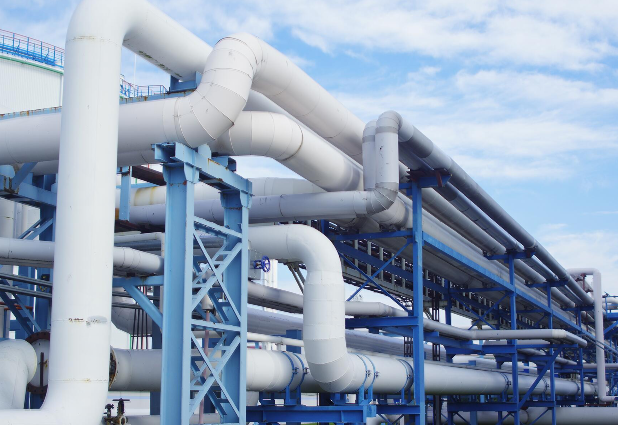Pipeline transportation is a method of transporting liquid and gas materials over a long distance using pipelines as a means of transportation. special components. Sometimes a pneumatic tube can do a similar job, transporting solid tanks with compressed gas while the cargo is inside. In recent years, the pipelines used for fluid transportation are mainly seamless pipes, and gas is mostly used for welded pipes. Shipping petroleum products by pipeline is more expensive than shipping by water, but still cheaper than shipping by rail. Most pipelines are used by their owners to transport their own products.

Advantages of pipeline transportation:
(1) The shipping volume is large.
An oil pipeline can continuously complete the transportation task. According to the size of its pipe diameter, its annual transportation volume can reach millions of tons to tens of millions of tons, or even more than 100 million tons.
(2) Small footprint.
The transportation pipelines are usually buried underground and occupy very little land; the construction practice of the transportation system has proved that the buried part of the transportation pipelines accounts for more than 95% of the total length of the pipelines, so the permanent land occupation is very small, respectively only 3% of highways and about 10% of railways. In the transportation planning system, priority should be given to the pipeline transportation scheme, which is of great significance for saving land resources.
(3) The pipeline transportation construction period is short and the cost is low.
A large number of practices in the construction of transportation systems at home and abroad have proved that the construction period of pipeline transportation systems is generally more than 1/3 shorter than the construction period of railways with the same volume. Statistics show that pipeline construction costs are about 60% lower than railways.
(4) The pipeline transportation is safe, reliable and continuous.
Because oil and natural gas are flammable, explosive, volatile, and leaky, pipeline transportation is safe and can greatly reduce volatilization loss. At the same time, air, water and soil pollution caused by leakage can also be greatly reduced. , Pipeline transportation can better meet the green requirements of transportation projects. In addition, because the pipeline is basically buried underground, the harsh and changeable weather conditions during its transportation process have little impact, which can ensure the long-term and stable operation of the transportation system.
(5) Pipeline transportation consumes less energy, has low cost and good benefits.
Developed countries use pipelines to transport oil, and the energy consumption per ton kilometer is less than 1/7 of that of railways. The transportation cost in mass transportation is close to that of water transportation. Therefore, in the absence of water, pipeline transportation is the most energy-saving transportation method. . Pipeline transportation is a continuous project. There is no no-load journey in the transportation system, so the transportation efficiency of the system is high. Theoretical analysis and practical experience have proved that the larger the diameter of the pipeline, the longer the transportation distance, the larger the transportation volume, and the higher the transportation cost. Taking the transportation of oil as an example, the ratio of the transportation cost of pipeline transportation, waterway transportation and railway transportation is 1:1:1.7.
Disadvantages of pipeline transportation:
1. Special type strong
The objects of transportation are restricted, and the goods carried are relatively single. Only suitable for transporting gaseous and liquid cargoes such as oil, gas, chemicals, crushed coal slurry, etc.
2. Poor flexibility
Pipeline transportation is not as flexible as other transportation methods (such as automobile transportation), and in addition to the relatively simple cargo carried, it also does not allow the expansion of pipelines. To achieve "door-to-door" transportation services, for ordinary users, pipeline transportation often needs to cooperate with railway transportation, automobile transportation, and waterway transportation to complete the entire transportation. Always one-way transportation, poor maneuverability.
3. Large fixed investment
In order to carry out continuous transportation, it is also necessary to establish storage depots and pressurization stations at each intermediate station to promote the smooth flow of pipeline transportation.
4. Strong franchise
Pipeline transportation belongs to special transportation, and its production and transportation and sales are mixed together, and it is not provided for other shippers to use.
Go here to learn more about " seamless vs welded pipe"


